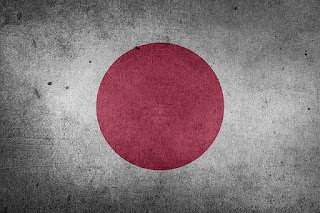Over the next few decades, Japan,
USA and other countries in
Asia will face an increasingly confident and powerful China, building up more effective
capabilities. Similarly China, USA and others from the region, will face an
increasingly restless Japan, which aims to become a "normal force"
in Asia and the world and which might choose to expand its capabilities in the future.
Besides the rise of China and Japan, there are other contenders for a greater role on the periphery of East Asia- India and Russia, which further complicates the dilemmas, that are facing the future relations between America, Japan and China.
Besides the rise of China and Japan, there are other contenders for a greater role on the periphery of East Asia- India and Russia, which further complicates the dilemmas, that are facing the future relations between America, Japan and China.
If, in an era of dynamic change, the enormous problems and challenges fail to find their proper management and solution, the security situation in the region could
seriously deteriorate, and not just for the U.S.,
Japan and China. A lot of concerns arise for the security setting in East Asia and many of them are linked to the cooperation or confrontation dilemma. But is agreement possible between the major players on important issues, threatening the regional security? To what extent, however,
each side wants to engage in joint action with the other two?
How each party sees its role in East Asia?
The inclination to cooperation depends on different variables, but the role of interest and power remains decisive. We need to better understand the behavior of the major powers in the region and follow their consistency before we make assumptions for the near future.
1. China
The concern about the military buildup of China triggering a regional arms race has been long considered. In fact, Tokyo follows closely the Chinese moves in this direction and responds with further military engagement with the United States.
Chinese military expenditures developed in an explosive manner in recent years to reach $145 billion for 2015, or a rise of 10.1% from the previous year. It is a fact that the Chinese conventional arsenal have increased rapidly, part of which, like a small number of
submarines, destroyers and fighter jets were bought from Russia. The current situation shows
that Chinese rearmament imposes questions about the peaceful Chinese rise. China also invests in asymmetric capabilities, suitable for cyber war. Thus, Beijing aims to prepare itself for a large scale actions in case of conflict.
For now the Chinese leaders have declared multiple times that their actions are not aimed at any foreign country and the peaceful development remains the cornerstone of the country's behavior on the international arena. Of course, other regional states are not so favorable on the Chinese military development and an arms race in East Asia is a probability. The decision for the peaceful appearance of the Chinese rise has
been adopted by the Chinese elite due to several reasons:
1.1 China's
relations with neighboring countries such as India,
Russia, Pakistan are generally normal and balanced. On the other hand, an increased hostility from a number of Southeast Asian countries towards China has been provoked by the Chinese actions in South China Sea. Overall, China
has not met a major foreign security threat in recent decades, with the exception of
that, which the independence movements in Taiwan
represent for the security and integrity of China.
1.2 China
has focused largely on its economic development and an involvement in an arms
race is considered unnecessary and even dangerous for the Chinese stance in East Asia. Attracting too much attention can harden the position of the United States who has grouped a number of East Asian countries around itself. More often than not, China perceives that grouping generally as an anti-Chinese coalition and a mean of Washington to balance against China.
1.3 The reluctance of China to race with the United States is that America
does not actually block the Chinese interests and influence in the region, with
the exception of the Taiwan
issue.
1.4 China
seeks to avoid such a race with America,
because it devotes huge
resources just to maintain the current status quo. For China it will be too costly to
compete with a rival, repeatedly surpassing it in all areas and the Chinese military officials recognize that fact. This does not mean China will accept that reality indefinitely.
2. Japan:
As the third largest economy in the world, Japan clearly has the financial and
scientific potential to rapidly expand its military power and become
"normal" country in the region, if the situation requires it. Japan may feel the need to meet the challenge of
expanding Chinese rearmament, if Tokyo considers
the military support given to Japan
by the US
as insufficient. With its economic expansion in East Asia, Japan has increased its political influence in the region. With increasing foreign interests, Japan will have to develop military capabilities in order to deter harmful intentions or to even defend them abroad.
Tokyo is highly concerned with the US approach towards China, because US shifting the focus on China will mean weaker ties with Japan, thus leaving the country vulnerable and isolated. This could force Tokyo to start a rapid rearmament which can shift the balance of power in East Asia with unclear consequences. Moreover the lack of appreciation for Japan in international organizations is regarded
as unfair and could pushe Japan
towards rearmament, which would provide the necessary respect for the country in
the world.
The mistrust that exists between China
and Japan has the potential
to threaten security in East Asia despite the U.S. effort to manage this complicated
situation. Wrong step by any of them or misunderstood opposite action, could
cause a chain reaction in the region, engaging other countries in a potential
conflict. So it is very important to understand the US position in this complex balance of power, which it maintains in the Far East.
3. The United States:
The relations between US, China and Japan are like a scale- if the US improves relations with one of them, the relations with the other decline. This endangers the protection of the American interests in the region and
exactly that is the reason for the United States
to seek mutual rapprochement with China
and Japan in search of a balance. Bilateral relations
individually can not provide an effective, permanent solution to stabilize the
relationship between the three countries. Seeking a solution in a trilateral
dialogue is imperative, otherwise the status quo is likely to remain so for
long and the insecurity in the region to continue.
If China and Japan are to embark on a strategic rivalry, then
the U.S. will face the need
to support Japan,
becoming a party of the dispute, whether it wishes it or not. In such a scenario, the
negative effects for all three countries would be inevitable, engaging them in an
exhausting race, reminiscent of the Cold War. China would be alone in such a
denouement and most certainly the relations between the three parties would have
suffered traumatic, even irreparable consequences, paralyzing their future
relations.
The dangers are many, but among the greatest is that if the
diplomatic isolation of Japan in East Asia descent to deeper dimensions, combined
with the dilemmas of security for Tokyo and domestic political turmoil, the
country might find itself forced to develop more militarized Japanese-American
alliance, that could further tense the relations in East Asia. This would divide the region and many countries would have to side either with China against militarized Japan or vice versa.
Even if America
proves to be able to keep distance from such a rivalry, it is not in the
interest of Washington the most powerful and
influential countries in Asia to embark on nonconstructive actions, threatening
to slow economic growth, create instability and thus greatly limit the ability
of the U.S. to maneuver geopolitically in
the region.
The necessity of the United States as a counterweight
and balance in East Asian affairs is more than obvious. It could play a role
as a mediator, coordinator, friend or unwanted foe. The U.S. should show flexibility in its relations
with Japan and China,
to act properly at the right time and to seek to restrain the forces that are
raging beneath the surface and to engage them into constructive initiatives.
This role is extremely difficult, but no other country in the world has the capacity to deal with
it any better. America
should highlight the common interests of East Asian countries, to help them
realize the benefits of mutual cooperation, to put their relationship on a
completely different plane. Building regional organizations that bind, could turn to be a major approach for peaceful relations between East Asian countries.
4. The importance of regional organizations:
East Asia is a
vast, complex and diverse region. The long-term peace depends much more on the
regional cooperation, rather than the particular success of one or few major
powers there. Acute rivalry between Japan
and China
can block the development of economic cooperation and that in the security
field. Because of its specific historical development, in addition to
territorial disputes and economic rivalries, the good relations between most
countries in East Asia are not easy to create
and maintain.
Of course, the countries there would not accept domination by a larger force. All countries
there want regional agreements, which offer a satisfactory solution to common
problems and in which each country holds a proper place. This further hampers
the institutionalization of the region, but a progress in this direction has
been made.
Since the early 90's, many Asian states have been making
efforts to develop closer multilateral cooperation and to establish a regional
community. Many forums have been created for this purpose, such as the
Asia-Pacific Economic Cooperation (APEC), ASEAN Regional Forum (ARF) for
regional security, ASEAN plus three (APT), and a new Summit of East Asia (East
Asia Summit).
These initiatives are yet in early stages of development and Asia is still far from the emergence of a truly
integrated community, but it is clear that Asian nations have concluded that
multilateral cooperation and regional integration could be the key to future
development. Surely, however, without the participation of China and Japan
the cooperation in every field of economy and security will be meaningless and
regional integration will lead nowhere if the countries in the region are
forced to choose between the two competing powers of China
and Japan.
The role of the United States in search of balance
in the region remains crucial. Without an outside assistance, success in this
endeavor would be even more uncertain.
The participation of America
is perhaps the most important element for achieving any result in East Asia's integration.






No comments:
Post a Comment